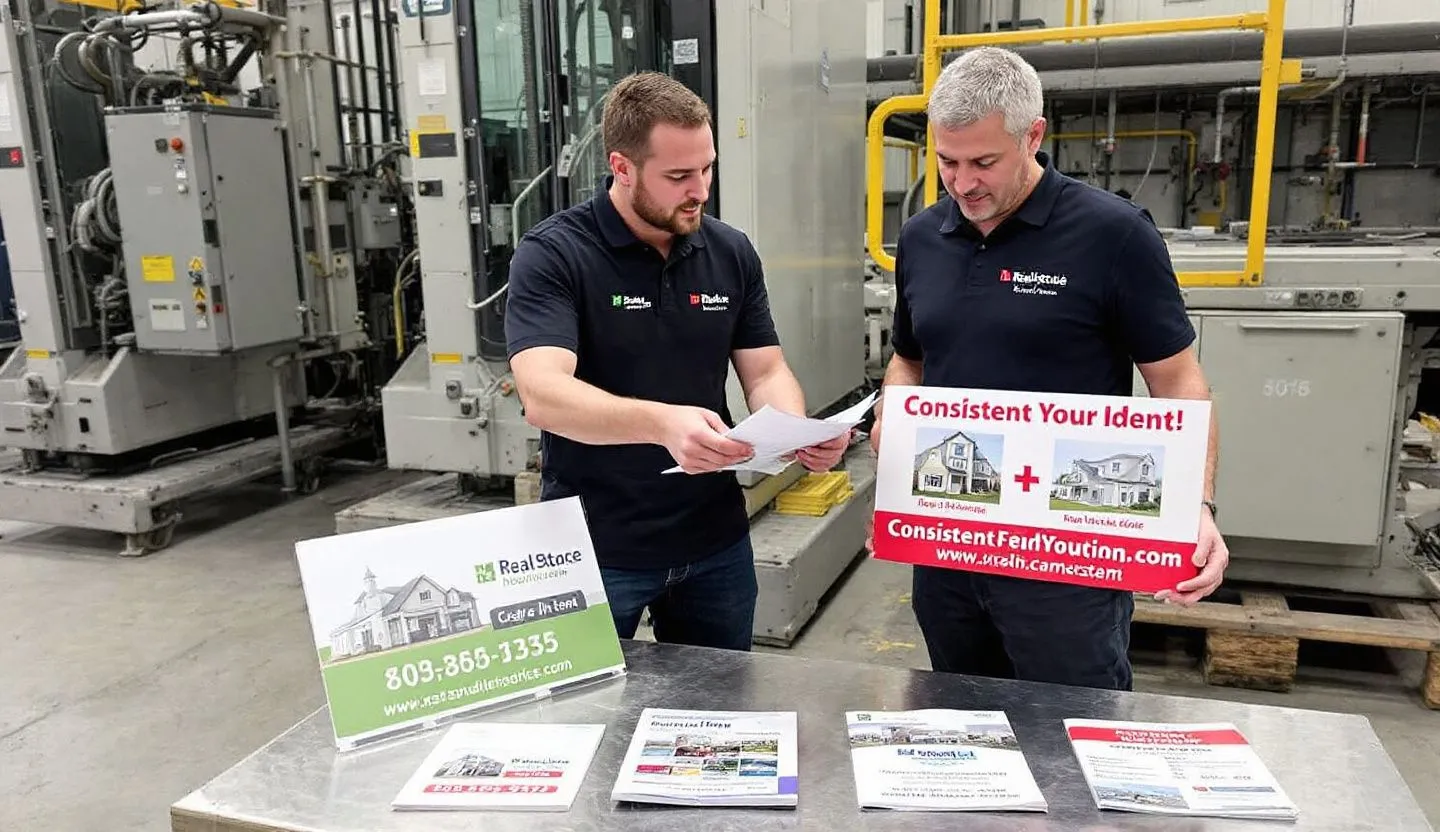I’ll be honest: the daily push and pull between speed, scale, and brand control in heavy machinery & equipment marketing operations is enough to make even the most seasoned enterprise marketer pause. When you’re running global campaigns, managing dealer networks, and fielding requests from sales, legal, and compliance,sometimes all in the same hour,“streamlined” can feel like a fantasy.
But 2025 isn’t giving us the luxury of standing still. The landscape has shifted. Markets are more competitive, digital transformation isn’t optional, and internal stakeholders expect results yesterday. We’re not just building brochures and updating spec sheets anymore; we’re orchestrating seamless, compliant, and efficient marketing operations at scale. Our teams are under pressure to deliver brand-consistent content, faster, across more channels and geographies than ever. And for those of us in heavy machinery and equipment, the stakes are even higher: one missed detail can mean millions in lost revenue or regulatory fines.
Let’s talk about how this reality is changing,and how we can get ahead, together.
The pain of complexity in heavy machinery marketing operations
If you’ve ever spent your morning untangling asset requests, reconciling conflicting product data, and fielding frantic calls from sales teams about “urgent” dealer presentations, you know the pain points aren’t theoretical. They’re real,and they’re multiplying.
Every enterprise marketer in this space has wrestled with:
- Siloed workflows and scattered tools: The “Frankenstack” is real. Our teams juggle legacy systems, local file shares, and half-integrated cloud platforms. We lose hours each week searching for the latest approved product specs or chasing down the right logo for a regional launch. This fragmentation slows everything. When a territory manager in Germany needs a compliant brochure for a new loader, or a U.S. dealer wants a co-branded email campaign, the gap between request and delivery can stretch for days. That’s time lost, deals delayed, and,worst of all,room for competitors to sneak in.
- Brand consistency at scale: In a world where heavy equipment deals hinge on trust and reputation, a single off-brand asset can erode hard-earned credibility. But with hundreds of touchpoints,dealer websites, trade show banners, sales decks, and more,keeping every asset on-brand is an operational minefield. And then there’s compliance. Each market brings new regulatory requirements. Labeling, safety disclaimers, environmental certifications: if one asset goes out of date, the risks are real.
- Content velocity vs. control: The pressure to deliver tailored, localized content is relentless. Field teams want more autonomy. Corporate wants control. Legal wants everything reviewed (preferably twice). IT wants security and integration. And all of us want faster time-to-market, without sacrificing quality or compliance.
This isn’t just operational frustration,it’s lost revenue, wasted resources, and, sometimes, brand damage that takes years to repair.
Why 2025 demands a new approach to equipment marketing operations
The world has changed, and so have the rules of engagement. The heavy machinery and equipment sector is facing a convergence of trends that demand a smarter, more agile approach to marketing operations.
- Buyers are digital-first: Today’s procurement teams do more research online, expect instant access to specs, and judge us by the quality and consistency of our digital presence. If we’re not providing accurate, compelling, and compliant information at every touchpoint, we’re not even in the running.
- Dealer and partner networks are expanding: The days of simple, centralized marketing are gone. Our dealer networks span continents, languages, and regulatory environments. Each partner wants the flexibility to localize content,but expects guardrails that protect the brand.
- Compliance is non-negotiable: With evolving safety, emissions, and trade regulations, every piece of collateral is a potential compliance risk. Regulatory audits aren’t just about fines,they can grind sales to a halt or trigger costly recalls.
- Speed is a differentiator: The first to market often wins. Whether it’s a new excavator launch or a sustainability initiative, we need to mobilize campaigns globally, quickly, and without costly rework.
These shifts aren’t incremental,they’re foundational. The old ways won’t work. If we keep relying on disconnected tools and manual processes, we’re choosing complexity over clarity, risk over control, and stagnation over growth.
What modern marketing operations look like in heavy equipment
So what does “streamlined” actually mean for heavy machinery & equipment marketing operations in 2025? It’s not just about tools or tech,it’s about reimagining the flow of work to create clarity, reduce risk, and unlock growth.
Integrated, secure platforms as the backbone
The days of patchwork solutions are over. Modern marketing operations require a single source of truth,a platform that unifies asset management, brand governance, approval workflows, and content distribution.
A dealer in São Paulo needs a Portuguese version of your latest wheel loader brochure. Instead of emailing back and forth, they access a secure portal, customize pre-approved templates, and auto-apply the latest legal disclaimers for Brazil. Compliance is baked in. Brand consistency is assured. And your creative team is freed up to focus on strategic work,not repetitive updates.
This isn’t just theoretical. Leading OEMs are already moving to integrated marketing operations platforms that:
- Centralize all approved assets and templates: with granular permissions for dealers, partners, and internal teams.
- Automate version control and compliance updates: so every asset is always current,no matter where it’s used.
- Seamlessly connect with CRM, ERP, and digital experience platforms: to deliver consistent, personalized content across every touchpoint.
Real-time compliance and risk management
The regulatory landscape isn’t getting any simpler. Whether it’s CE markings in Europe, EPA emissions in North America, or local safety certifications in Asia-Pacific, compliance is a moving target.
Modern marketing operations platforms allow us to:
- Build compliance checklists directly into creative workflows: Marketers select the product and region, and the system automatically applies the right legal language and certifications. No more last-minute scrambles or retroactive fixes.
- Track asset usage and expiration: Set up automated alerts for expiring certifications or regulatory changes, ensuring nothing slips through the cracks. Compliance officers, legal teams, and risk managers can all sleep a little easier.
Brand governance without bottlenecks
Brand policing shouldn’t feel like a turf war. When governance is integrated into daily workflows, it becomes invisible,empowering teams to move faster, not slower.
- Template-driven content creation: Give field teams and dealers the autonomy to localize content within set parameters. Lock down logos, fonts, and color palettes, but allow for localized messaging and imagery. The result? More content, faster, without sacrificing brand integrity.
- Automated approval flows: Route content for compliance, legal, or brand review with clear timelines and audit trails. No more email chains or missed approvals.
The impact of streamlined operations on speed and growth
We’ve all heard the promise: “Streamline your marketing operations, and you’ll see faster time-to-market and better business outcomes.” But what does that look like in practice, especially in heavy equipment?
Let’s ground this in reality. At a global OEM I worked with, the launch of a new excavator once took 8 weeks from asset creation to dealer enablement. By shifting to an integrated marketing operations platform with automated compliance and template-driven localization, we cut that to under 3 weeks.
That’s not just incremental improvement,it’s competitive advantage. Dealers were able to start pipeline-building campaigns while competitors were still wrangling approvals. Field sales teams had the right materials, in the right language, on day one. And the brand team? No 2 AM fire drills before the trade show.
Real-world strategies for 2025-ready marketing operations
The best strategies for heavy machinery & equipment marketing operations aren’t built on theory,they’re forged in the trenches. Here’s how we’re seeing leading enterprises actually make it work.
Build a single source of truth for assets and brand guidelines
Silos are the enemy of speed and control. Centralize every approved asset, template, and brand guideline in a secure, cloud-based repository accessible by every stakeholder,from marketing to sales, partners to compliance.
- Access control and audit trails: Give the right people the right access,nothing more, nothing less. Every action is logged, so compliance teams can track who did what, when. This isn’t just about governance; it’s about trust across the organization.
- Always-current assets: When a new emission standard hits or a product update rolls out, assets are updated in one place. Expired materials are automatically archived, reducing risk and confusion.
Empower local teams with guardrails
Local relevance matters. But so does brand protection. The answer? Template-driven content creation.
- Pre-approved, customizable templates: Field teams can localize messaging, swap in region-specific images, and select relevant specs,all within pre-set boundaries. Brand fonts, logos, and disclaimers are locked.
- Automated legal and compliance inserts: The system pulls in the latest regulatory language for each product and market, so every asset is compliant before it ever leaves the platform.
Automate, don’t just digitize, workflows
It’s not enough to “go digital.” True efficiency comes from automation.
- Approval workflows with escalation paths: Set up rules so assets are automatically routed for the right approvals,brand, legal, risk, IT,based on content type or region. If a deadline is missed, the system escalates.
- Scheduled content updates and expirations: Don’t rely on people to remember when assets need to be refreshed. Automate reminders, updates, and expirations to keep everything current.
Connect marketing operations with business systems
Integration is the linchpin. Your marketing operations platform should connect seamlessly with CRM, ERP, and analytics systems.
- Real-time data sync: Sales teams see the latest product collateral in their CRM. Marketing gets usage analytics tied to sales outcomes. Everyone works from the same playbook.
- Closed-loop reporting: Track which assets are used, by whom, and with what results. Use data to refine content strategy and prove ROI.
The role of compliance, legal, and IT in future-ready marketing
We can’t talk about heavy machinery & equipment marketing operations without addressing the often-misunderstood (and sometimes feared) roles of compliance, legal, and IT. In 2025, these teams aren’t just stakeholders,they’re strategic partners.
Compliance and risk: From gatekeepers to enablers
The best compliance teams don’t just say “no.” They build frameworks that let marketing move faster, with less risk.
- Embedded compliance checklists: Instead of reviewing every asset after the fact, compliance requirements are built into templates and workflows. Marketers can self-serve, knowing compliance is covered.
- Transparent audit trails: Every approval and change is logged, making regulatory audits faster and less stressful.
Legal: Speeding up, not slowing down
Legal review can be a bottleneck,or a competitive advantage.
- Pre-approved language libraries: Legal teams provide approved language for common disclaimers, certifications, and warranties. Marketers select the product and region, and the right legalese is auto-inserted.
- Conditional approvals: For low-risk assets, legal can set up conditional approvals,so content goes live unless flagged, instead of waiting in a queue.
IT: The glue holding it all together
IT’s role is shifting from gatekeeper to enabler.
- Secure integrations: IT ensures the marketing operations platform connects securely with other enterprise systems,CRM, ERP, DAM, and more.
- Data privacy and security: With sensitive product specs and customer data in play, IT manages permissions, encryption, and compliance with regulations like GDPR.
What’s possible when marketing operations truly work
I’ve seen firsthand how transforming heavy machinery & equipment marketing operations changes not just marketing,but the business itself.
- Faster, more consistent go-to-market: Instead of weeks or months, new product launches are global and on-brand in days. Dealers and field teams have what they need, when they need it.
- Reduced risk and audit stress: Compliance is proactive, not reactive. Regulatory changes are rolled out instantly across every asset. Audits are a matter of clicks, not fire drills.
- More time for strategic work: When we automate the repetitive, our teams have the bandwidth to focus on big, business-driving initiatives: new market entry, digital experiences, sustainability campaigns.
- Better partner and dealer relationships: Dealers feel empowered, not constrained. They can localize and personalize, knowing they’re protected by brand and compliance guardrails.
- Real business growth: Streamlined operations don’t just make marketing’s life easier,they drive measurable results. Faster launches. Higher-quality leads. Stronger brand equity. Lower risk.
The future of heavy machinery & equipment marketing operations is not just about keeping up with change,it’s about leading it. The complexity we face as enterprise marketers is real, but it’s also an invitation to rethink how we work, collaborate, and deliver value. By moving beyond the patchwork of disconnected tools and manual processes, we unlock the speed, control, and agility needed to thrive in 2025 and beyond.
When we put integrated, secure marketing operations platforms at the heart of our strategy, we empower every team,marketing, compliance, legal, IT, and partners,to move faster, with greater confidence and less risk. It means no more late-night fire drills, no more brand inconsistency, and no more compliance surprises. Instead, we gain the freedom to focus on what matters: driving growth, building trust, and delivering exceptional experiences at every touchpoint.
The path forward isn’t about working harder; it’s about working smarter, together. As we embrace new models for content creation, compliance, and collaboration, we set ourselves up not just for operational excellence, but for real, measurable business impact. In a world where speed, scale, and control are non-negotiable, streamlined heavy machinery & equipment marketing operations are the foundation for lasting enterprise growth. And that’s a future worth building,one campaign, one launch, and one partnership at a time.







